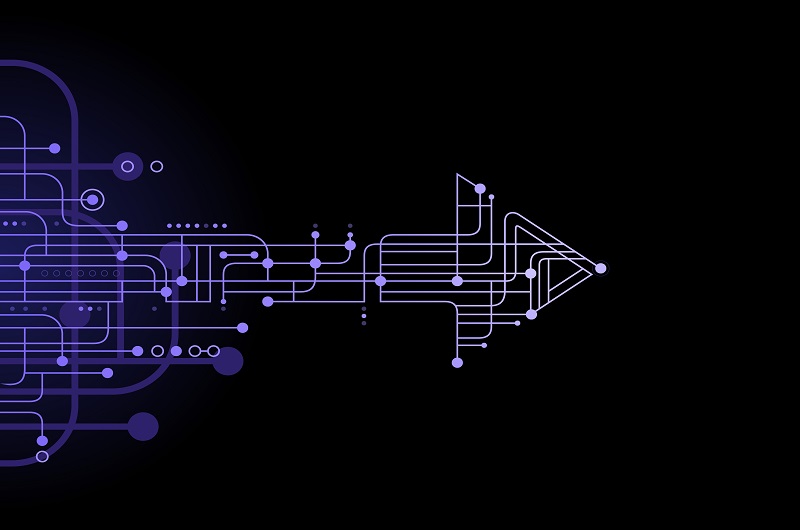Insight Paper May 25, 2022
Edge-Processing and Your Data Product Portfolio
Finding a competitive edge in data processing.
Data is continually growing and a critical aspect of businesses and individuals’ daily lives, with buzz phrases such as “Big Data” taking the forefront. However, this precludes aspects of data infrastructure and the processing location, the appropriate infrastructure which enables a business to use “Big Data”. In so far as processing location, as Internet of Things (IoT) Devices and Smart Devices have an increased presence in our day-to-day, a growing question is where the product portfolio should be processing data.
WHAT IS EDGE-PROCESSING?
“Edge computing is a distributed information technology (IT) architecture in which client data is processed at the periphery of the network, as close to the originating source as possible.”1
To understand the drive data has on modern innovations – a key example the Economist’s article Should data be crunched at the centre or at the edge? noted was self-driving cars2. On the larger end of the IoT spectrum, self-driving cars would only be possible if they had the data in-house and utilizing in real-time to where the data inputs and algorithms need to be crunched quickly and effectively. Edge-processing of data allows for multiple data streams to be considered (contextual data such as speed, traffic controls, etc.) to inform the car’s next operations. This is not to say that there is a shift away from centralized models which AWS, Microsoft Azure, and the like, but more so there needs to be greater mindfulness on the infrastructure solution your firm takes when building new products and to the possibilities to grow your business to new products.
BENEFITS OF SHIFTING PRODUCTS TO EDGE-PROCESSING CAPABILITIES
“Gartner predicted that by 2025, 75% of enterprise-generated data will be created outside of centralized data centers. The prospect of moving so much data in situations that can often be time- or disruption-sensitive puts incredible strain on the global internet, which itself is often subject to congestion and disruption.”3
Architecture can be more flexible to provide key data product needs – such as speed of processing – solely based on establishing the data processing actions further away from the edge. Due to the decentralization, edge-computing allows for lowest latency of processing while saving processing bandwidth. Although it needs to be kept in mind – this functionality is viable for products included within the IoT definition, allowing the product’s data processing independence limiting data movement through various other systems.
WHAT ARE THE LIMITATIONS OF EDGE-PROCESSING?
Although edge-processing provides the benefits in independence and decreased latency processing, there are its own limitations. Stated earlier, functionality is reserved for IoT devices, which cascades to different issues. Capability, Network Connectivity, Security, and Data Lifecycles,4 noted by Stephen Bigelow, are all impacted by IoT edge-processing. Beginning with Capability, the processing parameters and processing requirements need to be meticulously defined, otherwise the process could exceed the resources available to the IoT device. The same goes for Security: policy and device management needs to be strict as IoT devices are insecure and liable to breaches or other attacks. For Connectivity, if an IoT loses connection to the Internet, it becomes useless. And decentralization always brings its own issues – such as the Data Lifecycle of IoT devices needs to be closely controlled and managed.
During product portfolio planning – remaining flexible with your data processing location and infrastructure – may give your products a competitive advantage. An approach with edge-processing provides a future framework for new innovative products and portfolios, providing unique services through Artificial Intelligence (AI) and other machine learning functionalities. However, it is not a catch-all solution, as there are serious limitations that need to be considered with IoT products. With the ideation and definition of a product roadmap, the utilization of edge-processing can give your product and value the “edge” over competitors if diligently implemented and evaluated.
Contact a Trexin Advisor to learn how we can help you “get to done”.
REFERENCES
1. Bigelow, Stephen J. “What Is Edge Computing? Everything You Need to Know.” SearchDataCenter, TechTarget, 8 Dec. 2021, https://www.techtarget.com/searchdatacenter/definition/edge-computing.
2. “Should Data Be Crunched at the Centre or at the Edge?” The Economist, The Economist Newspaper, 20 Feb. 2020, https://www.economist.com/special-report/2020/02/20/should-data-be-crunched-at-the-centre-or-at-the-edge.
3. Bigelow, Stephen J. “What Is Edge Computing? Everything You Need to Know.” SearchDataCenter, TechTarget, 8 Dec. 2021, https://www.techtarget.com/searchdatacenter/definition/edge-computing.
4. Bigelow, Stephen J. “What Is Edge Computing? Everything You Need to Know.” SearchDataCenter, TechTarget, 8 Dec. 2021, https://www.techtarget.com/searchdatacenter/definition/edge-computing.

